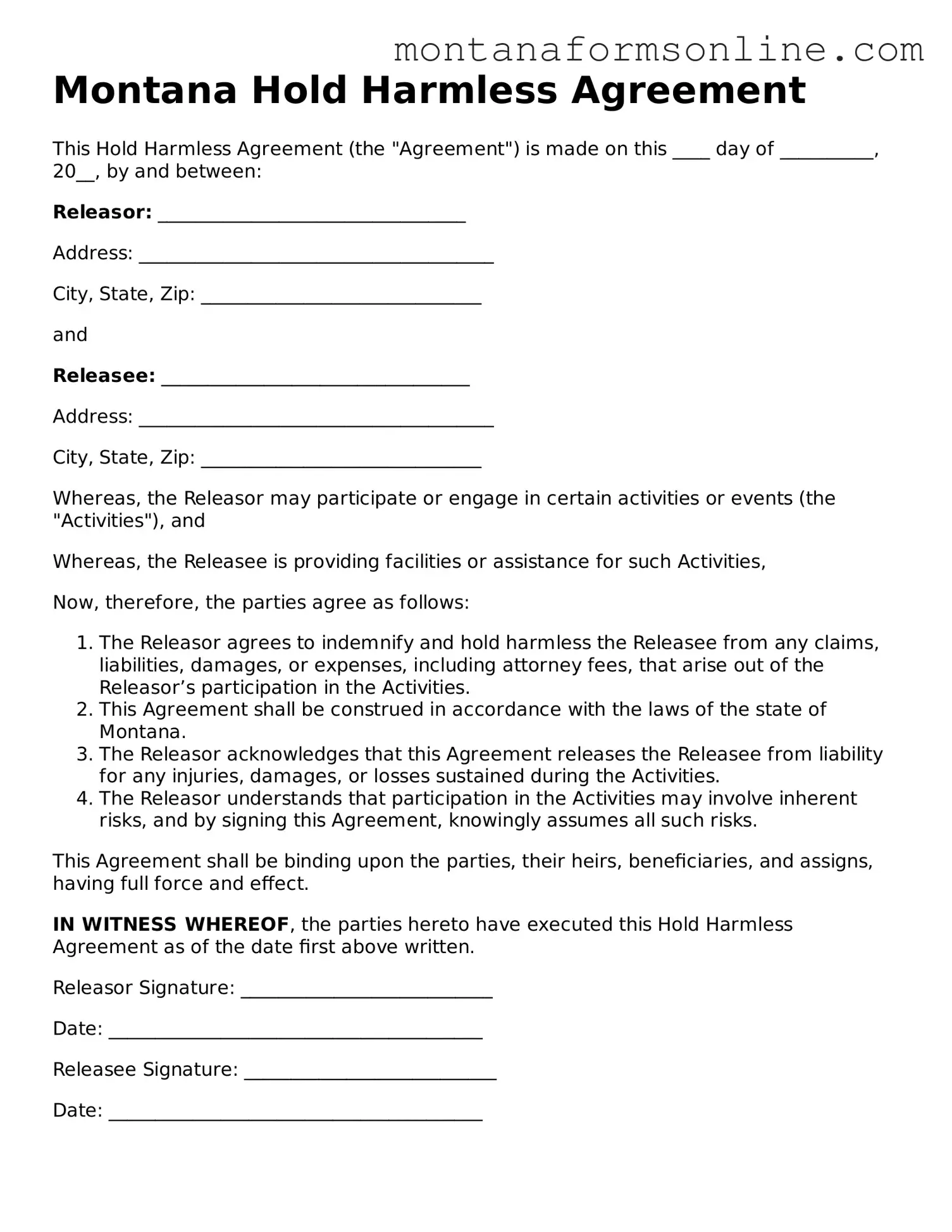Montana Hold Harmless Agreement
This Hold Harmless Agreement (the "Agreement") is made on this ____ day of __________, 20__, by and between:
Releasor: _________________________________
Address: ______________________________________
City, State, Zip: ______________________________
and
Releasee: _________________________________
Address: ______________________________________
City, State, Zip: ______________________________
Whereas, the Releasor may participate or engage in certain activities or events (the "Activities"), and
Whereas, the Releasee is providing facilities or assistance for such Activities,
Now, therefore, the parties agree as follows:
- The Releasor agrees to indemnify and hold harmless the Releasee from any claims, liabilities, damages, or expenses, including attorney fees, that arise out of the Releasor’s participation in the Activities.
- This Agreement shall be construed in accordance with the laws of the state of Montana.
- The Releasor acknowledges that this Agreement releases the Releasee from liability for any injuries, damages, or losses sustained during the Activities.
- The Releasor understands that participation in the Activities may involve inherent risks, and by signing this Agreement, knowingly assumes all such risks.
This Agreement shall be binding upon the parties, their heirs, beneficiaries, and assigns, having full force and effect.
IN WITNESS WHEREOF, the parties hereto have executed this Hold Harmless Agreement as of the date first above written.
Releasor Signature: ___________________________
Date: ________________________________________
Releasee Signature: ___________________________
Date: ________________________________________
